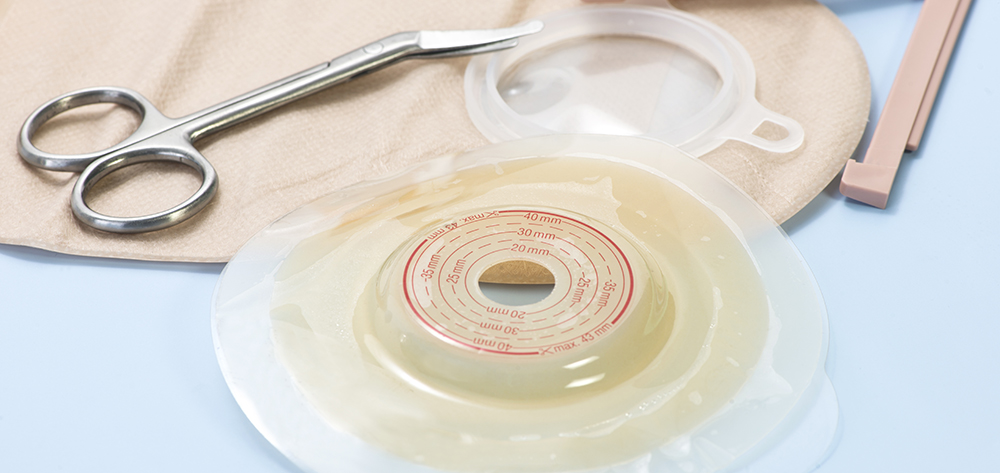Self-management ostomy program improves HRQOL
A five-session ostomy self-care program with a curriculum based on the Chronic Care Model can improve health-related quality of life (HRQOL), according to a study in Psycho-Oncology.
“A chronic care ostomy self-management program for cancer survivors” describes results from a longitudinal pilot study of 38 people. Participants reported sustained improvements in patient activation, self-efficacy, total HRQOL, and physical and social well-being. Most patients had a history of rectal cancer (60.5%) or bladder cancer (28.9%).
Assessment scale may help predict pressure ulcer development in patients with fecal incontinence
A study in the International Wound Journal has found that higher scores on the Incontinence-Associated Dermatitis and its Severity (IADS) tool are associated with an increased likelihood of developing a pressure ulcer in patients with fecal incontinence.
The authors of “Prospective study on Incontinence-Associated Dermatitis and its Severity instrument for verifying its ability to predict the development of pressure ulcers in patients with fecal incontinence” suggest that patients with IADS scores higher than 8 points should be classified as being at risk of developing a pressure ulcer and receive “intensive care as a proactive measure” to prevent pressure ulcer development.
Keratin-based products effective for burn treatment
Researchers report in Burns that compared to standard products, novel keratin-based products facilitate healing with minimal scarring in patients with superficial and partial thickness burns.
“Keratin-based products for effective wound care management in superficial and partial thickness burns injuries” notes that the keratin products are cost-effective, associated with minimal pain and itch, and easy to use in community-based care.
Sirolimus-eluting stents help wound healing in patients with ischemic PAD
Infrapopliteal sirolimus-eluting stents (SES) accelerate wound healing in patients with ischemic peripheral arterial disease (PAD) compared with balloon angioplasty, according to a study of 200 patients in JACC: Cardiovascular Interventions.
“Wound healing outcomes and health-related quality-of-life changes in the ACHILLES Trial: 1-year results from a prospective randomized controlled trial of infrapopliteal balloon angioplasty versus sirolimus-eluting stenting in patients with ischemic peripheral arterial disease” also reported a trend of more quality-of-life gains for patients receiving an SES.
Incontinence of older persons affects QOL of their caregivers
“Impact of incontinence on the quality of life of caregivers of older persons with incontinence: A qualitative study in four European countries” concludes that incontinence has a strong effect on the quality of life (QOL) of caregivers.
The study in Archives of Gerontology and Geriatrics included 50 interviews with caregivers in Italy, the Netherlands, the Slovak Republic, and Sweden. The researchers discovered that families need to learn new competencies in caring for the older person with incontinence and that incontinence remains “a taboo and a high stigmatizing condition” for caregivers. The concept that incontinence is unavoidable in older patients, along with shame and embarrassment, prevents caregivers from seeking help at an early stage.
Trauma patients vulnerable to device-related pressure ulcers
“Pressure ulcers in trauma patients with suspected spine injury: a prospective cohort study with emphasis on device-related pressure ulcers” reports the incidence of pressure ulcers in 254 patients with suspected spine injury as 28.3%, with 60.7% of those related to devices.
The study, published in the International Wound Journal, found pressure ulcers in 16 different locations on the body. The researchers conclude that the proportion of device-related pressure ulcers is “very high in trauma patients.”
Intensive therapy for patients with diabetes reduces CV complications
“Intensive diabetes treatment and cardiovascular outcomes in Type 1 Diabetes: The DCCT/ EDIC Study 30-year follow-up” reports that intensive treatment reduced the incidence of cardiovascular (CV) disease by 30% and the incidence of major CV events (nonfatal myocardial infarction, stroke, or cardiovascular death) by 32%.
Authors of the study, published in Diabetes Care, note that lower HbA1c levels accounted for the observed treatment effect on CV disease risk, and that increased albuminuria was also associated with CV disease risk.







